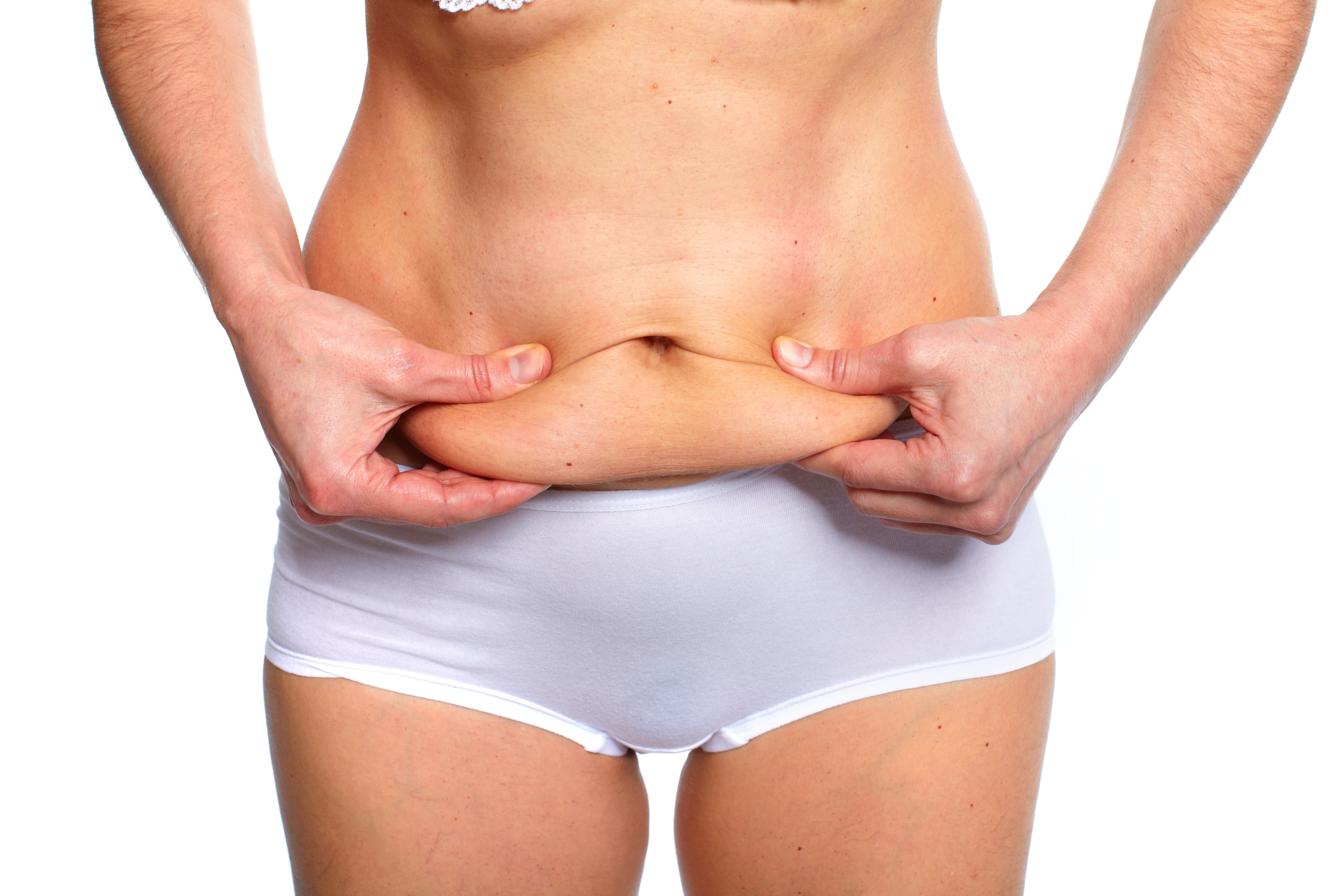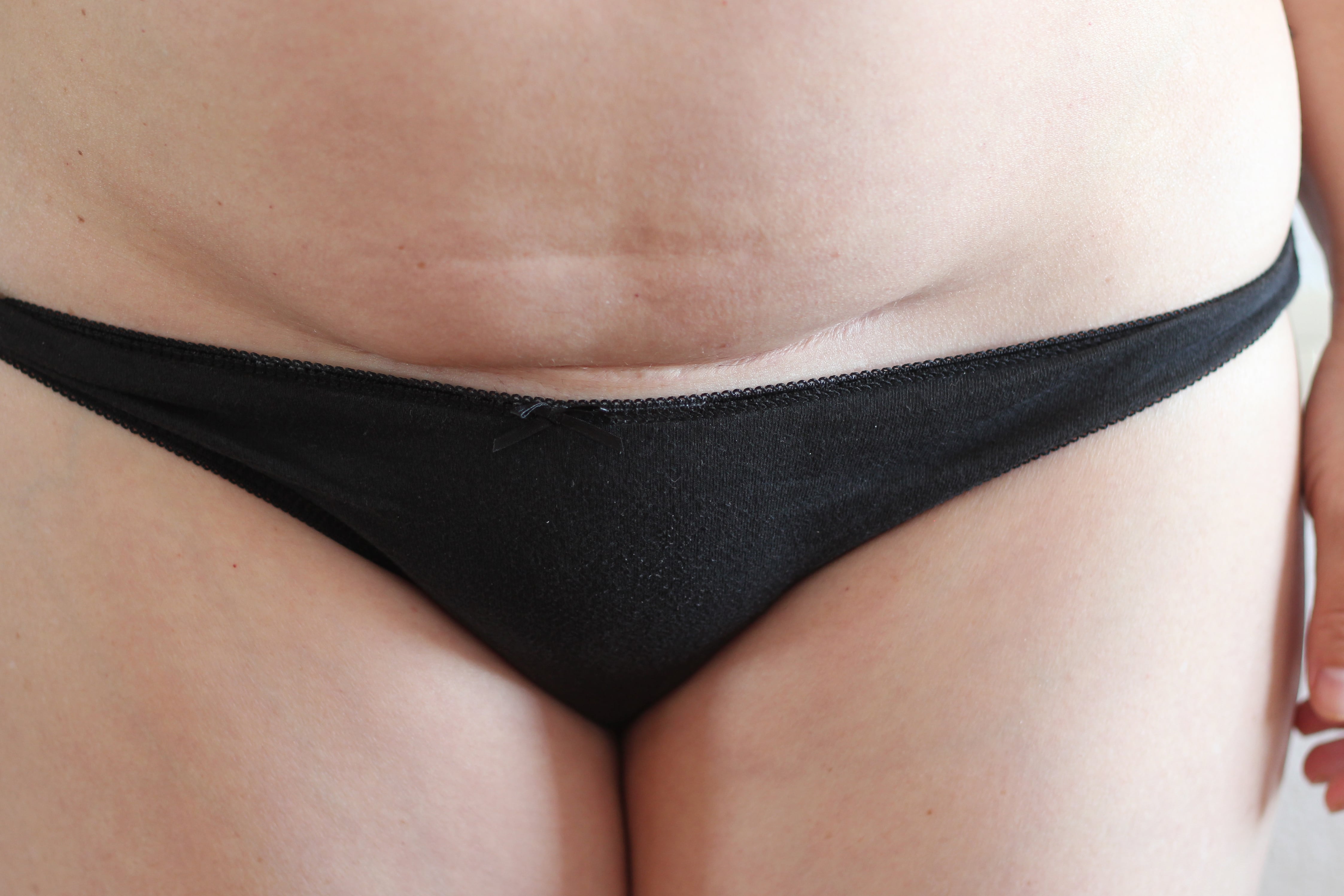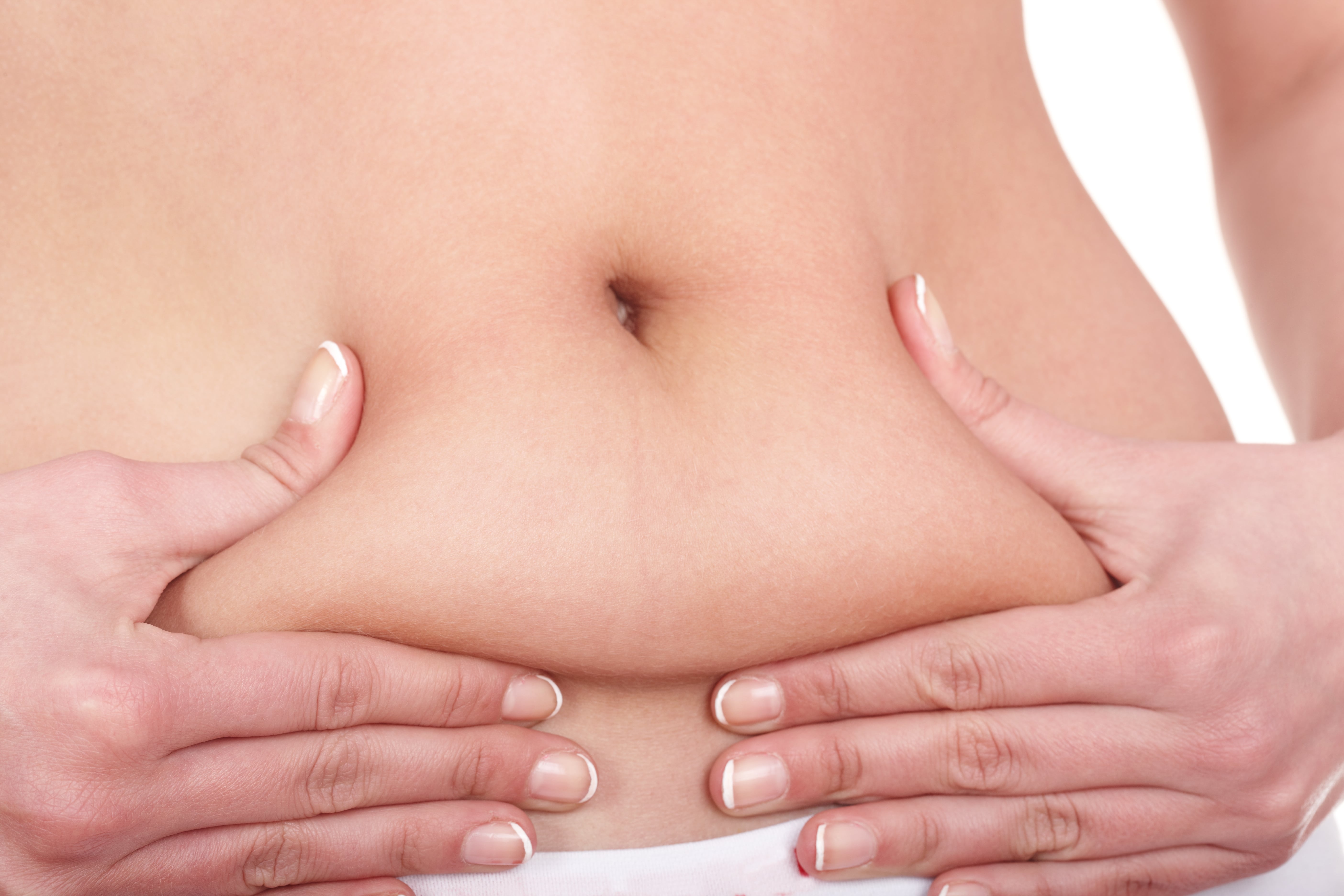


We’ve previously addressed C-section scars, but what about that “shelf” or “pooch” peeking over the scar? These come in many shapes and sizes, but they all have one thing in common: if you’re reading this, you don’t want it to be there. We always advocate healthy lifestyle choices (primarily diet and exercise) as the first line in addressing issues pertaining to excess body fat or stubborn fat deposits in inconvenient places. However, sometimes it is hard to lose the fat you want to lose without losing it in places you’d rather keep it, and sometimes (especially after pregnancy) your skin does not snap back the way you’d like it to. That is where the treatment options discussed here come into play.
Since no two post-partum tummies are the same, an individualized approach to this issue is necessary. We can divide these C-section shelves into three categories based on their anatomy and tissue characteristics, and this will guide our treatment decisions. These categories are: excess fat with loose skin (most common), excess fat with good skin tone, and loose skin alone (least common). Here, we will deal with each of these categories one by one and discuss the best course of action for each. Please note that this post focusses on localized pockets of extra tissue that hang over C-section scars and does not address the post-pregnancy bulge that can involve most of the abdomen. This is often best treated with an abdominoplasty (more on that here). The three types of C-section shelf:
Excess Fat, Loose Skin
This is the most frequently encountered scenario. It is extremely common to have trouble losing all the weight that was gained during pregnancy, and there can not infrequently be a persistent fatty deposit that seems to hang over your C-section scar. Additionally, pregnancy often stretches the skin of the abdomen beyond its ability to snap back on its own. Since this kind of C-section shelf involves problems with both the skin and fat layers, our treatment must address both of these layers. A conservative amount of liposuction (often under local anesthesia) in which fat is carefully suctioned from the area through incisions smaller than a pencil eraser is extremely effective in restoring lower abdominal contour in these scenarios.
In individuals with mild to moderate skin laxity, BodyTite is a powerful adjunct that will effectively tighten loose skin with radiofrequency (RF) energy. It is essentially a way to tighten your abdominal skin without an abdominoplasty scar. Instead, the same tiny incisions used for liposuction are used to introduce the RF wand, which then transmits energy across the skin to a receiver on the skin’s surface. This heats the skin, shrinking collagen molecules and causing skin contraction. The end result is a dramatic reduction in the “shelf.” This procedure requires about 2 days off of work (so Fridays are very popular!). In individuals with severe skin laxity, a “mini” tummy tuck is often the way to go. This procedure removes the excess skin and fat under your belly button using the scar from your C-section with a small extension on either side.
Excess Fat, Good Skin Tone
Individuals with this kind of shelf can do very well with liposuction alone. After the fat is removed with liposuction (again often with local anesthesia alone), the skin can contract on its own, so there is no skin excess remaining to hang over the C-section scar.
Loose Skin Alone
This is a fairly unusual situation which can occur when someone has gained weight during pregnancy, lost the excess fat in their abdominal area, but their skin is not elastic enough to completely contract. This often looks less like a shelf and more like a small skin roll sitting on top of the C-section scar. For mild to moderate skin laxity, BodyTite is again a very good option. In cases of severe laxity, the excess skin can be removed using small extensions on either end of your C-section scar.
A word on stretch marks: These are extremely common after pregnancy and occur because the skin has stretched beyond its capacity to do so while maintaining its structural integrity. One treatment that has shown great promise in treating stretch marks is called Morpheus8. Morpheus8 is a next-generation radiofrequency microneedling device that stimulates collagen production, improving skin tone and contour. This process is called “collagen induction therapy.” Platelet Rich Plasma (PRP) can be combined with Morpheus8 to enhance the collagen induction process by introducing growth factors critical to wound healing into the cellular microenvironment.
So, C-section shelves are extremely common, and can be treated very effectively – usually with minimal down time. They key to a great outcome is to diagnose the cause of the problem and address it directly.
Tummy tuck for a C-section shelf
A tummy tuck for a C-section shelf is an operation (otherwise known as an abdominoplasty designed to remove excess fat and skin that can cause a shelf, or “pooch”, over a C-section scar. A tummy tuck also usually involves repairing the abdominal muscles (rectus abdominis) which can separate from one another during pregnancy. This condition is called a rectus diastasis. A C-tuck refers to a tummy tuck that is performed at the same time as a C-section. While it may seem appealing to have an abdominal contouring procedure at the same time as a C-section so there is only one recovery period, Dr. Smith strongly cautions against this practice. First, the size and shape of the abdomen continues to change significantly for several months after delivery or the completion of breastfeeding (whichever is later), so it is very difficult to design a C-tuck to deliver ideal results. Since the abdomen is still changing, it is hard to know how much extra skin and fat to remove, for example. There is also a much higher rate of complications associated with a C-tuck as compared to a tummy tuck that is performed a few months after delivery. Dr. Smith wrote about this in the official journal of the American Society of Plastic Surgeons (“Plastic and Reconstructive Surgery“)
C-section FAQ’s
1. How to get rid of hanging belly after c–section years later?
A belly that is hanging over a C-section scar is usually composed of extra fat and loose skin. For more severe cases, an abdominoplasty (tummy tuck) is performed to remove the extra skin and fat. If the issue is only present below the belly button, a “mini” abdominoplasty with a smaller scar may be appropriate. If the entire abdomen is involved, a full abdominoplasty will likely be needed to address the issue. For less severe cases, a combination of liposuction to remove the fat and energy-based devices like VASER and BodyTite may be appropriate.
2.How long does it take for C-section pooch to go away?
This depends on the type of treatment. If removed with a tummy tuck, results are immediate. If liposuction and energy-based treatments are used, it can take a few months to see the final result.
3. Can you get rid of C-section pooch without surgery?
If diet an exercise are not doing the trick, a C-section pooch can be reduced with non-surgical treatments like Emsculpt Neo. Minimally invasive options include liposuction, VASER, and BodyTite.


